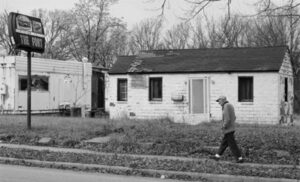THE BROKEN WINDOWS THEORY
 Blight and decay are recognized as invitations to violence & property crimes.
Blight and decay are recognized as invitations to violence & property crimes.
Violent crimes and property crimes are influenced by causal factors in the physical and social environment. “In certain neighborhoods”, physical conditions and the social dynamics are among the primary reasons why crime occurs generation after generation, “in certain neighborhoods”. Blight and decay are now widely recognized as invitations to violence and property crimes. This is often referred to as the broken windows theory, introduced by James Wilson and George Kelling in the early 1980s.
History has proven there is a direct nexus to crime…
The broken windows theory espouses that untended property (symbolized by a single broken window) is a visual cue for diminished social control and attracts additional vandalism, loitering, and other criminal acts. Vacant buildings can become havens for trash, stray animals, squatters, and criminals. Vacant properties are also more likely to be vandalized, or burned to the ground, and theft from vacant properties is less likely to be reported.
Moreover, as residents perceive a rise in crime, they modify their behavior by avoiding social interactions near the untended property or by moving out of the neighborhood, further reducing informal social controls, and fostering more crime. Before long, residents and businesses leave the city, which causes a domino effect in reducing the tax base, as we have witnessed over the last five decades.
This tax base reduction eventually causes the loss of public service employees such as police, fire fighters and other civil servants. The broken windows theory can be thought of as a small cancerous cell growing and growing until it takes over an entire area. This is the slippery slope many inner cities across the U.S. are now experiencing because they were unaware it was occurring or unwilling to address it early on.
Adopt-A-COP Solutions understands the importance of making sure we address blight, and anything that is occurring in our clients’ neighborhoods and commercial areas that mimics the end result of the Broken Windows Theory. Stopping the “Broken Windows Theory” from occurring in the first place is paramount to reducing crime.


